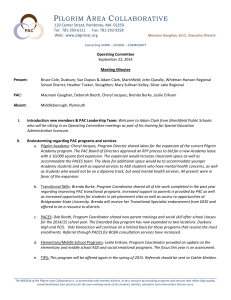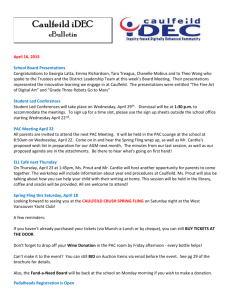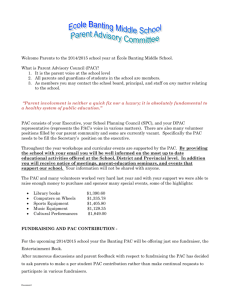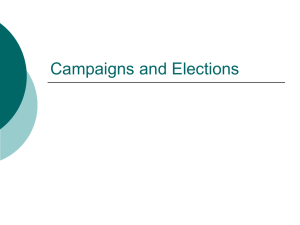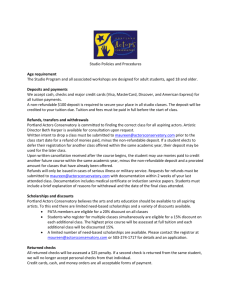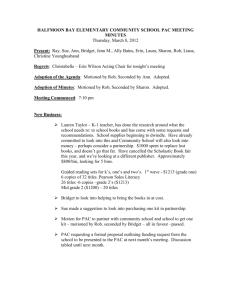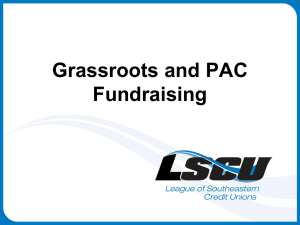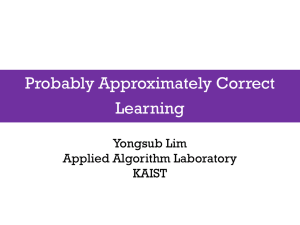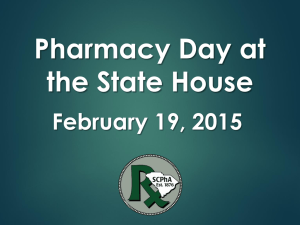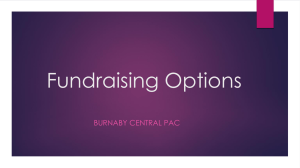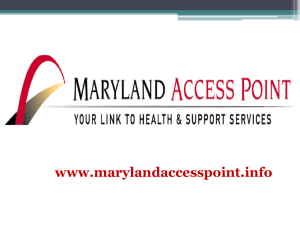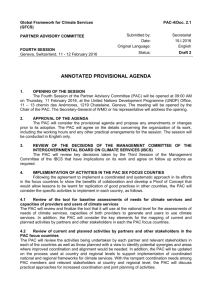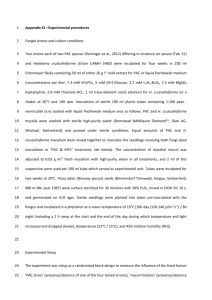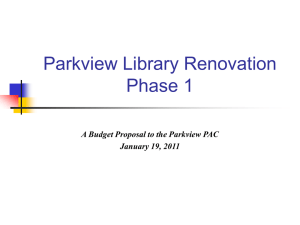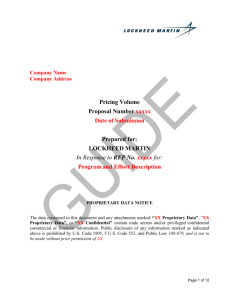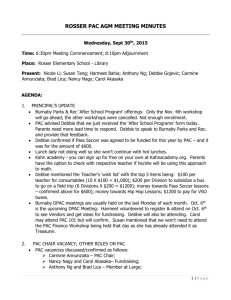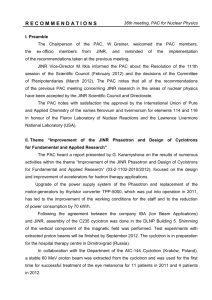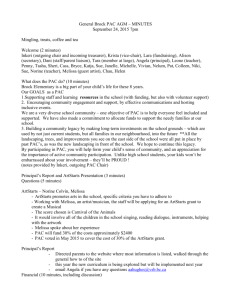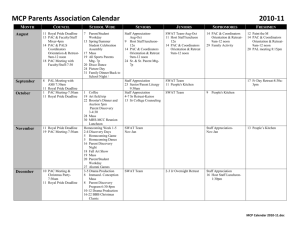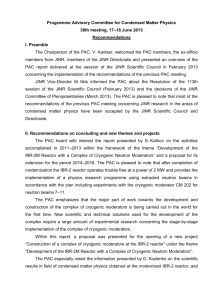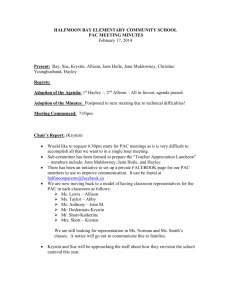Primary Adult Care (PAC): An Overview
advertisement
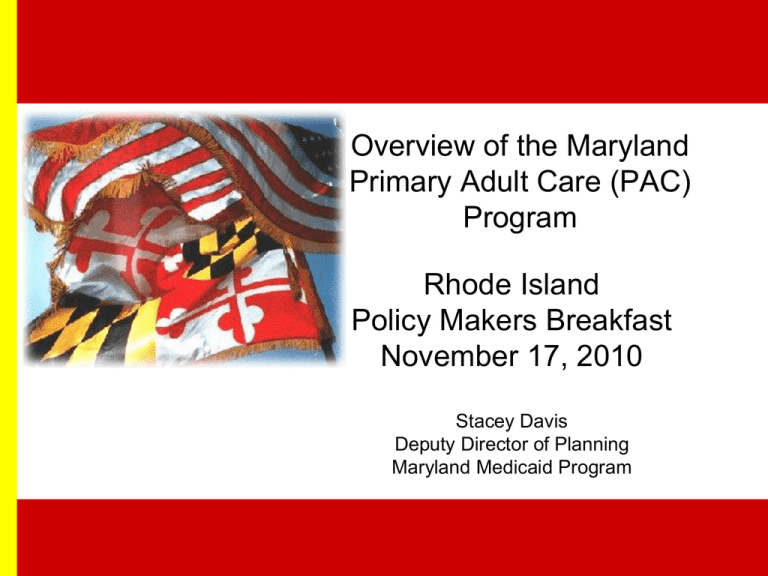
Overview of the Maryland Primary Adult Care (PAC) Program Rhode Island Policy Makers Breakfast November 17, 2010 Stacey Davis Deputy Director of Planning Maryland Medicaid Program Maryland Medicaid Provides benefits for an average more than 900,000 people – one in 7 Marylanders Costs nearly $8 billion in state and federal funds PAC covers approximately 50,000 people (or 5.6% of the total Medicaid population) 2 Medical Assistance Program Coverage (Effective 02/01/09) Pregnant Women 300 300 Employed Individuals with Disabilities Program (EID) MCHP Premium 250 ~ 225 200 Home and Community-Based Waivers (only for very specific populations) 185 MCHP 133 135 116 SLMB – Premium only. 100 Medicaid for Parents and Caretaker Relatives & Medicaid PAC Program 40 PW 0 1 Poverty Level: 1 person = $10,830 2 persons =$14,570 4 persons = $22,050 As of 1/23/2009 6 19 3 Age 19 to 64 QMBPremium & Cost Sharing Dual Eligible Medicare & Medicaid 100 Age 65 and Over+ 3 Note: This chart is for illustrative purposes only. Each coverage group has specific eligibility and some asset requirements, which are not shown. PAC – A Brief History HB 762 of 2003 instructed the Department of Health and Mental Hygiene (DHMH) to apply for a waiver to develop a primary care network for uninsured adults based on existing state programs • Maximize federal and state dollars • Streamline program eligibility for recipients As a result, Primary Adult Care (PAC) program was developed 4 PAC – A Brief History Public Health Maryland Primary Care Program provided primary care and limited specialty to about 8,000 chronically ill uninsured individuals who also participated in the Maryland Pharmacy Assistance Program through the use of State-only funds Public Mental Health System provided services to low income people in the “gray area” (between 50,000 and 100,000 units of service annually) through the use of State-only funds Maryland Pharmacy Assistance Program (under Medicaid) provided prescription coverage through a Medicaid waiver 5 PAC – A Brief History Implemented PAC in July 2006 through Maryland’s existing HealthChoice 1115 demonstration waiver and had to meet maintenance of effort requirements. Public health program participants were auto-enrolled Decision was made to provide services through existing HealthChoice MCOs who chose to participate • Reduced the administrative burden • Increased efficiency • Promoted continuity of care Electronic interfaces were (and continue to be) an area of concern 6 Who is eligible for PAC? • Adults without dependent children 19 years or older who are: – Maryland residents, – Not on Medicare, and – U.S. Citizens • Enrollees do not need to have a medical disability to qualify • Original income and asset requirements: – For an individual: income less than 116% FPL and assets less than $4,000 – For households greater than one: incomes less than 100% FPL and assets less than $6,000 • April 1, 2009 - regulations changed to exclude asset requirements and income threshold is 116% FPL for all family sizes. – This change mirrored standards for families with children. Most persons with children were also given the opportunity to receive full benefit package. 7 Which health services are covered? PAC Covers the following health services: • Free primary health care • Prescription drugs – Co-payment of up to $2.50 for generic drugs and $7.50 for brand name drugs (pharmacist can deny drug if copayment is not paid) • Free in-office mental health services through a counselor or psychiatrist • Limited lab and diagnostic services • Community-based substance abuse services (January 2010) • Facility fees for emergency room visits (January 2010) Some benefits are carved out and covered fee for service, including Specialty Mental Health System services and drugs, and HIV/AIDS drugs 8 How are services provided? Managed Care Organizations receive a monthly capitation payment for each enrollee All MCOs must participate in HealthChoice to serve PAC enrollees, five (5) currently participate in PAC Persons have 28 days to select an MCO, during that time they receive pharmacy and mental health services. If they do not select, they will be automatically enrolled Carved out services include: • Mental health • Pharmacy services for individuals with HIV/AIDS • Some high cost pharmacy 9 PAC Expansion of Services PAC was scheduled to expand services to enrollees in July 2009, but this has been delayed due to budget limitations In January 2010, there were program changes, including: • Substance rates were increased for community providers • Substance abuse services are covered • Some emergency room services are covered 10 Program Enhancements Scheduled Phased in Expansion for Childless Adults July 2009 – Phase 2- Specialty and ER service coverage July 2010 – Phase 3- Outpatient service coverage July 2011 – Phase 4- Inpatient service coverage July 2012 – Phase 5- Full Medicaid benefits Actual Phased in Expansion for Childless Adults January 2010 – Added Substance Abuse benefits and ER services 11 Total PAC Enrollment July 2006 – July 2010 60,000 48,224 50,000 41,008 40,000 30,000 36,020 24,093 27,351 29,087 Jul-07 Jul-08 20,000 10,000 0 Jul-06 12 Jul-09 Dec-09 Jul-10 The Future of PAC Limited ability to expand because of budgetary limitations Initially, the state could cap the program. ARRA and PPACA prevent any caps on eligibility We anticipate continued increases in enrollment prior to 2014 Recipients should automatically convert to full coverage in January 2014 13 For more information Stacey Davis E-mail: srdavis@dhmh.state.md.us Phone: 410.767.5954 14

